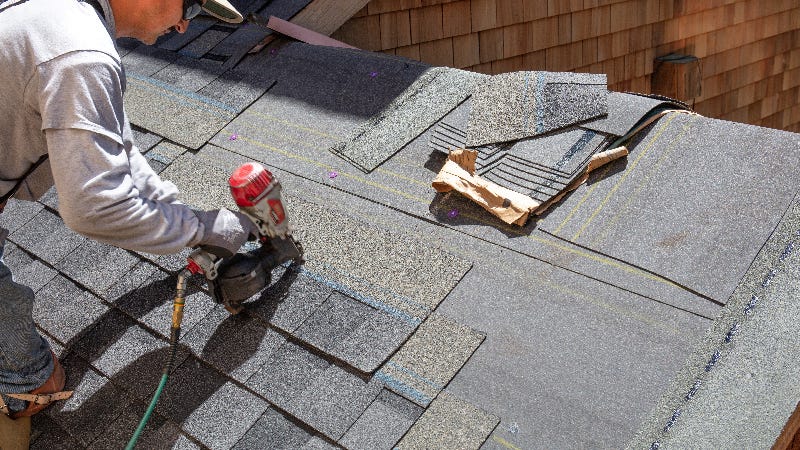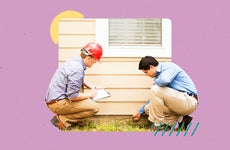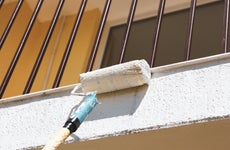How much does it cost to replace a roof?

The Bankrate promise
At Bankrate we strive to help you make smarter financial decisions. While we adhere to strict , this post may contain references to products from our partners. Here's an explanation for .
Replacing the roof is probably the house renovation project that homeowners most dread. And with good reason: It’s one of the most expensive, typically ranging between $5,755 and $12,498 according to HomeAdvisor, the online contractor resource/search service. The average U.S.homeowner spends about $9,117 on a new roof.
But the reality is, roof replacement is often not a discretionary project but a vital one, commanding top priority among home improvement projects. Ignoring the need for a new roof will not only cause additional damage to your home but will decrease its value, and impact your ability to sell it for top price.
Though replacing a roof is not a small expense — and not the sort of project you should skimp on — there are ways to make it more affordable.
Key takeaways
- The average cost of replacing your roof is around $9,117.
- The price tag for replacing a roof breaks down into two basic parts: 40 percent materials and 60 percent labor.
- Depending on your roof’s condition, you might be able to repair it instead of completely replacing it.
- Installed properly, a new roof can last for decades and maintain your home's value.
What are the costs of replacing a roof?
While $9,117 is the national average, roof replacement costs can soar as high as $46,000. A “reroofing” project — as the pros call it — typically involves removing the roof’s existing shingles, making spot repairs to the underlying deck or structure (if necessary), and installing new shingles.
How often you’ll need to replace your roof and how much you spend depends on a variety of factors, ranging from the geographic location of your house to the type of shingles you select. Basically though, the price tag for replacing a roof breaks down into two basic parts: 40 percent materials and 60 percent labor. With labor, you’ll typically pay between $1.50 to $3.00 per square foot, according to HomeAdvisor, though it can rise as high as $7 for complex or extremely steep roofs (see “Roof pitch,” below). There’s also removal of the old roof, which can run $1–$5 per square foot. All told, you can estimate paying $4.35–$11 per square foot to replace a roof, according to Angi, the online contractor search service.
Roof replacement materials
The most common elements among the materials that will cost you in replacing a roof:
- Underlayment: the water-resistant or waterproof barrier that’s installed onto the decking of your roof before shingles are installed.
- Shingles: the material covering the roof that you can see.
- Soffits: an integral barrier that covers the eaves of your home. Damages to soffits can make rafters susceptible to moisture, and impact the ventilation in the attic.
- Drip edge: a strip of material (usually aluminum) installed at the edge of the roof that directs water off the roof and into the gutters.
- Flashing: installed in areas where a drip edge isn’t feasible and redirects water.
Roof replacement labor costs
You usually need skilled professionals to replace an entire roof. Their work involves:
- Removal (“tear-off” in roofers’ lingo) and disposal of the old roof and its materials
- Installation of new roof
- Cleanup
Roof pitch
Factors such as the pitch (the angle) of your roof, features like chimneys and skylights, and the roof size all affect the time and effort — and so the cost — of the replacement.
Pitch is particularly important, as it impacts the difficulty of the job. The pitch refers to the slope of your roof. And the steeper/more sharply angled your roof is, the more materials, painstaking labor and possibly special equipment it requires, which can increase the price of replacing it.
Keep in mind: To calculate your roof’s pitch, first measure the inches your roof raises vertically for every foot it stretches horizontally. So, if your roof raises three inches vertically for every foot it extends horizontally, you’ll have a ratio of 3:12. Pitches over 6:12 start to fall in the steeper-than-normal category.
How do you know you need to replace your roof?
There are some telltale signs that roof replacement time is imminent:
- Loss of shingles
- Cracked shingles
- Curling of shingle edges
- Water leaks
- Pooling water on the roof
- Damage to roof deck
If you suspect problems — or even if you don’t — it’s often a good idea to pay for a professional roof inspection. Hiring a roof inspector costs $125 to $325, according to HomeAdvisor, but it can help you pinpoint problems and determine whether an entire roof replacement, versus some roof repairs, is necessary.
How often should you replace your roofing?
Maybe you haven’t noticed any signs of damage — yet. Even so, most roofs have a natural lifespan. The recommended replacement time of your roof largely depends on the material it’s made of.
| Roof material | Lifespan (years) | Cost per roof |
|---|---|---|
| Sources: RoofAdvisor.com, HomeAdvisor, Thumbtack | ||
| Composite shingles | 12-20 | $7,500-$13,000 |
| Asphalt shingles | 15-30 | $5,750-$12,200 |
| Wood shingles (cedar) | 20-25 | $16,000-$27,000 |
| Rubber roofs | 30-50 | $4,235-$7,095 |
| Metal roofs | 50-75 | $5,700-$16,200 |
| Slate shingles | 125–200 | $5,800–$24,000 |
How to reduce the roof replacement costs
1. Know your roof replacement materials
When it comes to roof replacement, shingle selection is critical — it’s usually the single biggest material cost. Shingle cost is quoted on a per-square basis or often a roofing-square basis (100 square feet is considered a roofing square).
There are many material types you can choose, ranging from rubber to galvanized steel, along with asphalt, slate, or copper. Asphalt tends to be the contemporary go-to roofing option: It offers many benefits in that it’s cost-effective (prices average around $2,500 for a roof of 17 squares — coverage for a 2,200 sq.-ft. house, the average U.S. home size), easy to install and can last for a generation.
Composition shingles, made of a fiberglass or cellulose base, coated with asphalt and topped with mineral granules, run less, but they wear out faster. At the other end of the scale is a metal like copper: durable but among the most expensive options available, with prices starting from $25,000 for 17 squares.
Considering which materials you use can help you receive the best combo of savings and durability when calculating your replacement roof cost.
2. Aim for offseason discounts
If you’re able to plan your roof replacement in advance, wait until the roofer’s slow season. The busiest season for roofers is summer and fall, so consider scheduling your replacement for early/late winter or early/late spring.
3. Insurance claim
Depending on your homeowners insurance policy and the reason for the re-do, your roof replacement cost may be covered by insurance. It’s a good idea to speak with a roofer first — even commission an inspection — to determine the extent and cause of the roof damage and their opinion on whether or not it may be a valid insurance claim. Then, speak with your insurance agent and initiate the claim if possible.
4. Get multiple quotes
Seek comparable quotes from at least three reputable roofers. Watch for things like unusually low bids. If two bidders quote $10,000 and one bidder quotes $5,000, this should raise a red flag. It may indicate that the roofer is low-balling to get the job and then will do sub-par work. Watch out for bidders who list among their terms “payment required in advance.”
5. Research roofers
Ask for recommendations from local friends or neighbors who have had recent roof replacements and ask for referrals. Ask potential roofers for customer referrals and pictures of their comparable work. Always require proof of bonding, licensing and insurance and then validate those claims through your local government before any work commences or any payment is issued.
Cost of a roof replacement vs roof repair
Depending on your roof’s condition, you might be able to repair it instead of completely replacing it. The average cost for repairing your roof is $379-$1,763, with the national average being $1,064, HomeAdvisor says.
Obviously, this is a lot less, but much depends on the nature of the problem. In general, minor fixes like soffit tears, valley issues and gutter damage are worth doing individually, instead of replacing your roof. A few damaged shingles here and there, or in one contained area, can be handled for as low as $150.
Conversely, if the area of roof damage is more widespread, your roof’s shingles are close to their lifespan expiration, you notice mold growth or there are signs of structural damage, costs can balloon to $7,500. In these cases, you’ll want to replace the roof, since the costs to repair it will fall in line closer to what a new one would be, anyway.
How to pay for replacing your roof
Roof warranty and homeowners insurance
Your homeowners insurance probably won’t pay to fix a roof declining due to age or normal wear and tear. However, damage done to your roof resulting from climate or weather-related events like thunderstorms, hail, wind, snow and tornadoes or hurricanes often is. A policy can also cover damage done from falling trees, limbs or other debris. A full roof replacement might be a harder sell than just repairs, but it’ll depend on the extent of the damage and the reason for the replacement.
Bankrate insight box: Keep in mind your homeowners policy has a deductible. You must pay a certain amount out-of-pocket before your insurance carrier pays the rest of the claim.
A home warranty may cover tears, leaks and other ordinary wear-and-tear problems, if you opt for an add-in roof option.
Specific roofing components, such as shingles, are often covered by a manufacturer’s warranty, if defects happen during their expected lifespan. There are often exclusions to this warranty, including improper installation (one reason not to DIY a roof) and maintenance. The roofing contractor may also guarantee their work for a certain amount of time, or let you pay to extend it.
Personal loans
Personal loans are a good option for large projects like roof replacements. Loan terms are pretty flexible on personal loans and allow you to select a very short term or a longer one if necessary. Personal loans provide you with a lump sum payment and typically have fixed interest rates. This type of “unsecured” loan means you won’t have to put up collateral, like your home. There also may be origination or closing fees associated with this loan from your bank or lending institution.
Home equity loans
A home equity loan uses the equity in your home to borrow against, using the home as collateral. Also referred to as a second mortgage, it’s often used for large home-related expenditures, like replacing a roof. Payments and terms on a home equity loan are similar to that of any standard loan with a fixed interest rate, but the interest may be tax-deductible.
Home equity line of credit
A home equity line of credit, or HELOC, allows you to borrow against the equity in your home while using the home as collateral. It’s similar to the home equity loan, the biggest difference is the line of credit is open, or revolving, and is usually accompanied by a variable interest rate. You can borrow against it and pay it back, but the line of credit will remain open so that you can borrow against it again.
A home equity line of credit can be a nice solution for a large project like replacing a roof. However, since the full cost of a roof replacement is usually specified in advance, a personal loan or home equity loan with a fixed interest rate might be a more prudent option.
DIY roof replacement vs hiring professionals
There are some benefits to doing the roof replacement yourself. First, you can save money. Since 60 percent of roofing costs come from labor, using the national average of $9,117 to replace a roof, you could save up to $5,470 doing it on your own. And, you won’t have to wait on a roofing company to do the work. You can get to it immediately.
However, there are also some cons to consider. Mainly: Roofing work is dangerous. Hefting heavy shingles up a ladder is no small feat, and having to maintain balance on roofs with steep slopes can be challenging. If you’ve a highly pitched roof, you might need to lease special equipment, too.
With these factors in mind, it is best to leave it to the pros if you don’t have extensive construction experience (especially in roofing work), you have a fear of heights or you want everything done correctly. Keep in mind manufacturers can void warranties for materials if they deem them improperly installed — and often, “proper” is synonymous with “professional.”
Is replacing a roof a good investment?
Doing a roof replacement is an expensive financial endeavor, and it doesn’t offer the greatest ROI: It recoups around 49 percent (for metal roofs) to nearly 61 percent (for asphalt) of its cost, according to Remodeling’s “2023 Cost vs Value Report.”
However, it also has many long-term benefits. Installed properly, a new roof can last for decades. It enhances the home’s curb appeal. And, while it does require a large, four-to-five-figure outlay, ongoing repairs and patch-ups to a damaged or weakening roof can easily mount much higher over the years — not to mention the expense of problems in other areas that might ensue from holes and leaks.
Most of all, a roof replacement gives you peace of mind that your home is ready to withstand the elements and able to maintain its value — especially if/when you put it up for sale. Examining the condition of the roof is a key part of a home appraisal and a home inspection. If there’s significant damage, you can bet the buyer will ask you to fix it or knock a chunk off the purchase price.
Related Articles



